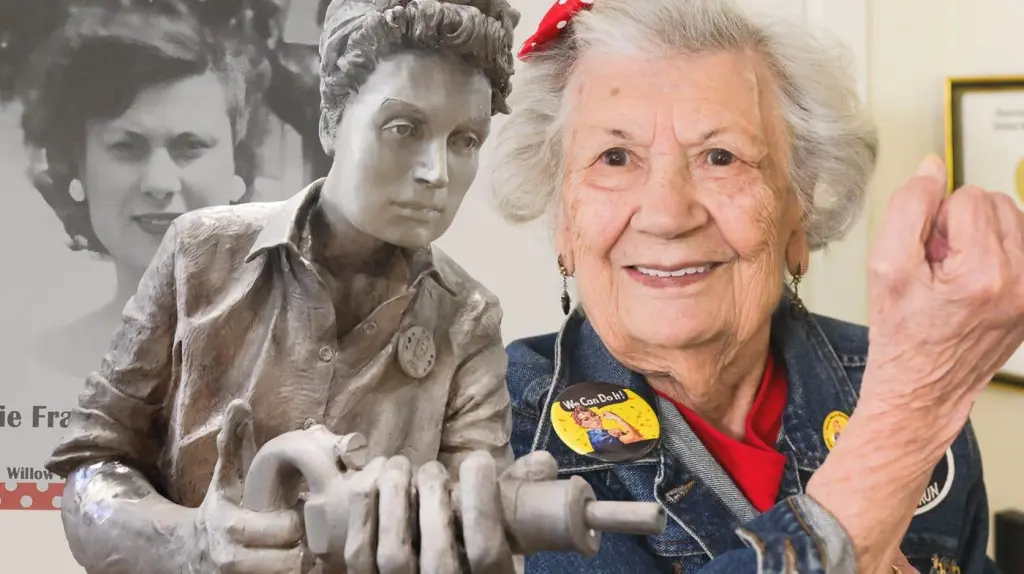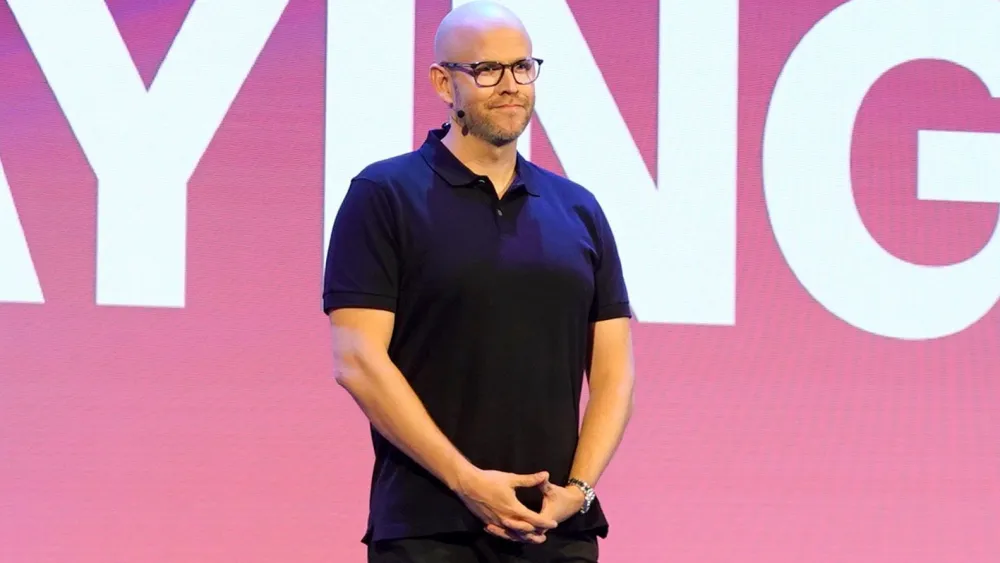Copyright Santa Rosa Press Democrat

Rosie the Riveter — the muscle-flexing icon of women headed off to factories during World War II to support the war effort — isn’t just a mythical figure to Frances Mauro Masters of New Baltimore. The 103-year-old lived it. Mauro Masters was one of the thousands of women who worked during the war at the Willow Run aircraft manufacturing plant in Ypsilanti Township. She helped to assemble B-24 Liberator bombers with two rivet guns. The Rosies were “raising their sleeves up to work,” Mauro Masters said. “That’s what it is.” Now, Mauro Masters, who still isn’t afraid to strike the famous “Rosie” pose, is the inspiration for a Rosie the Riveter bronze statue that’s being added to the Michigan WWII Legacy Memorial at Memorial Park in Royal Oak. It is scheduled to be unveiled this Veterans Day on Nov. 11. Her statue will symbolize the homefront war efforts in the state, said Legacy Memorial President John Maten. “There’s a lot of people that say, ‘World War II ended 80 years ago. Why is this relevant today?’ Well, it’s Rosie the Riveter, with women in the workforce and how they changed society,” Maten said. Mauro Masters was among the production workers in southeast Michigan who produced 30% of all U.S. war materiel as part of a larger effort to harness the auto industry’s manufacturing capacity and expertise. Many of the workers were women, who took manufacturing jobs while men fought overseas. The sculpture of Mauro Masters was designed by Ukrainian artist Oleg Kedria. It took 300 pounds of bronze to create and depicts Mauro Masters using her rivet gun. “It is a true honor and privilege to be able to work on a piece like this and be able to have not only the historical significance, but the local significance,” said Benjamin Cassell, the owner and operator of the Fine Arts Sculpture Centre in Clarkston, who oversaw the creation of Mauro Masters’ sculpture. ‘I lost weight, but I gained muscle’ A Detroit native, Mauro Masters was 19 years old when the United States was thrust into World War II after the Japanese attack on Pearl Harbor in December 1941. Her two older brothers were drafted into the armed forces. One fought in the Pacific; the other in Europe. She wanted to join the Women’s Army Corps, but her mother objected because her brothers were enlisted. But she heard through her sister that there were openings at Willow Run Ford Motor Co. plant, so she quit her job as a supermarket cashier and went to work there. “I thought, ‘Well, why not work there, make more money and help the country?’” she said. At its peak, the plant employed more than 42,000 people and produced a bomber every 63 minutes, according to the Henry Ford Museum archives. Mauro Masters and her two sisters each had separate jobs at the plant, said her daughter, Mary O’Brien. The rules at the plant were “very strict,” Mauro Masters recalled. Workers were forbidden from taking photos of the inside, she said. As a riveter, Mauro Masters helped to assemble the planes with two rivet guns. One of the guns could be held without assistance, as seen in her statue. The other rivet gun was so large it hung from the ceiling, she said. “I lost weight, but I gained muscle,” said Mauro Masters, who worked at the plant through the end of the war. Mauro Masters said her son has joked that she “killed Hitler.” While she didn’t personally kill the leader of the Third Reich, the planes she assembled were used to bomb German military and industrial sites in Europe. The war efforts in southeast Michigan didn’t stop at manufacturing vehicles of war, Maten said. He said people in the area also planted victory gardens and rationed goods. Mauro Masters said it was a somber time for the region. “Everybody did their job, everybody minding their own business, and we all helped each other, whoever needed help,” Mauro Masters said. “It was different than it is now.” Not the only ‘Rosie’ Maten and Masters said World War II permanently changed southeast Michigan’s workforce. Many veterans took advantage of the GI bill and went to college when they came home from the war, which left jobs at the plants open, Maten said. He said many workers moved from the Southern states to fill these jobs, which Mauro Masters noticed when she worked at the old Chrysler plant in Hamtramck after the war. Mauro Masters said the women around her age with whom she worked during the war “all stayed” in manufacturing and production. “(The war) opened up the field for the women outside of their homes, because our mothers never worked,” she said. O’Brien said her father died when she was young, so her mother was “always the breadwinner.” She said her mother was her hero, even before she discovered her mother was a warplane riveter. It wasn’t until the Willow Run plant was demolished in the early 2010s that O’Brien discovered what her mother did during the war. “My brothers took my mother to the bomber plant, and she was just dressed in regular clothes,” O’Brien said. “They called me afterward, and they said, ‘Mary, oh my gosh, you wouldn’t believe it. Mom was swarmed and practically taken away.’” Since then, Mauro Masters and O’Brien have been involved with other “Rosie the Riveters” who have started associations. O’Brien explained that every woman who contributed to the war effort was a “Rosie,” but the riveters are the most famous. But like everyone else who served in the war effort, the riveters have grown fewer over time. “All of the ladies we started with — I looked through a photo recently, and most of them are gone,” O’Brien said. ‘It’s not just to honor a static place’ Mauro Masters’ statue is simply the latest effort to turn the World War II Legacy Memorial into a full educational experience. It has bricks with the names of people who served in the war, flags representing the U.S. military branches and facts about the war displayed next to each flag. It also has a statue of a soldier sitting next to his rifle, reading a letter from home. Mauro Masters was involved in the creation of her statue down to details such as what her work badge displays, Cassell said. “She visited the foundry a couple of times, and we kind of got to visit and talk with her. Especially the first time, we wanted insight and wanted to hear her story and get details,” he said. The statue will be one of nine bronze figures at the memorial when it’s complete. The memorial will include a 10-foot-high granite wall with stars to honor Michigan residents who died in the war and an amphitheater area, Maten said. “In the name, we have ‘Legacy Memorial,’ so it’s not just to honor a static place. It’s a place to come and celebrate and honor people, and also learn about it, including how it affected their lives, even today,” Maten said. In a news release, Mauro Masters called her sculpture “beautiful” and said she was proud to be part of the memorial. “She loved the fact that it was holding a tool, that it was more of an action figure, not just a figure standing up looking pretty,” O’Brien said. Maten hopes installing Mauro Masters’ statue will prompt people to donate to the war memorial. They need just under $2 million for its completion, he said. As for Mauro Masters, the statue has prompted her to reflect on her time as a riveter. “I was privileged to work there,” Mauro Masters said. “I was honored.” ‘Rosie’ statue dedication details



